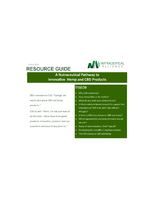Oracle Unveils Next-Generation Architecture for Oracle® Fusion Middleware
REDWOOD SHORES, Calif., May 9 -- Today at JavaOne, Oracle unveiled the architecture for its next-generation middleware, which will support customers' requirements related to modern application development and deployment. Designed to provide the industry's first unified infrastructure for Grid computing, Service-Oriented Architecture (SOA), and Event-Driven Architecture (EDA), the next generation of Oracle® Fusion Middleware will provide a foundation for event-driven composite applications and applications with extreme scalability and performance requirements.
Current middleware offerings only permit organizations to support SOAs, event processing, and Grid computing at "the edge," requiring each component of their application platform be developed, deployed and managed as a separate entity. Delivering support for the three key technology paradigms -- Grid computing, SOA and EDA -- together at the core, Oracle's standards-based middleware will enable organizations to more rapidly adapt to changing conditions, gain real-time insight into business operations and achieve virtually unlimited application scalability. Additionally, the middleware will serve as a foundation to support modern applications and meet organizations' extreme transaction processing (XTP), event processing and advanced SOA needs.
"Our vision marks a significant advancement in how organizations can benefit from moving Grid computing, SOA and EDA to the core," said Thomas Kurian, Oracle Senior Vice President, Server Technologies. "By providing a foundation for modern applications, Oracle will enable organizations to develop, deploy, integrate and manage applications in a unified and scalable manner."
Meeting Extreme Performance and Scalability Requirements
Modern applications have increasingly heavy demands for high-performance that surpass the capabilities of existing middleware. With its next-generation middleware, Oracle plans to extend its leading support for Grid computing by delivering a platform that uses the in-memory data grid the company gained through its recent acquisition of Tangosol. The company's middleware will provide a platform for XTP to support extreme demands for real-time data analysis, intensive computations and high performance transactions. Organizations will benefit from the platform's true linear scalability and its ability to push data closer to the application for faster access and greater resource utilization with in-memory nodes clustered across distributed servers.
SCA-Based Service Infrastructure Extends SOA
Oracle's next-generation middleware will also feature a service infrastructure based on the Service Component Architecture (SCA) standard, which the company helped define. Building on Oracle's extensive work with early SOA adopters, it is developing a new standards-based platform to serve as the backbone for composite applications. The platform will provide developers a way to rapidly and easily assemble, deploy and manage modern applications by bringing SOA to the core of application development, extending beyond SOA-based application interoperability.
The Java-based service infrastructure will use the SCA model for the creation and assembly of composite applications. The service infrastructure should provide better performance of intra-service and component communication, as well as an enhanced, seamless security framework with built-in policy enforcement points for authentication, authorization and encryption. It will also consolidate metadata and deployment descriptors associated with the various service components and vastly simplify management of composite applications.
Complex Event Processing for EDA
Organizations are increasingly adopting EDA as a platform to effectively manage the increasing number of events generated from IT systems, business processes and physical sensors such as RFID. With this in mind, Oracle is developing new Complex Event Processing (CEP) capabilities that support high-volume, programmatic analysis of events to identify patterns and correlations across multiple heterogeneous event sources. These capabilities will complement Oracle's existing EDA offerings, such as Oracle Business Activity Monitoring, that provides real-time operational dashboards for tracking business key performance indicators, multi-channel alerting, and invoking automated or manual response actions.
About Oracle
Oracle (NASDAQ:ORCL) is the world's largest enterprise software company. For more information about Oracle, visit our Web site at http://www.oracle.com/.
FCMN Contact: teri.whitaker@oracle.com
Source: Oracle
CONTACT:
Letty Ledbetter,
+1-650-506-8071,
letty.ledbetter@oracle.com,
or Teri Whitaker, +1-650-506-9914, teri.whitaker@oracle.com, both of Oracle
Web site: http://www.oracle.com/




